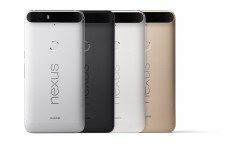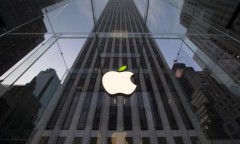By Steve Pak, | February 22, 2016

Master Card Logo
MasterCard is launching a facial recognition system that uses artificial intelligence to approve web purchases. The new mobile tech would use selfies or fingerprints to authenticate online purchases. Large banks will roll out the new service in the United States, Canada, and the United Kingdom during the next couple months.
Like Us on Facebook
Ajay Bhalla is president of enterprise security solutions at MasterCard. She said that within five years people around the world will regularly use the authentication tech, according to CNN.
Bhalla explained that when making purchases face and fingerprint scans are safer than typing passwords because many customers use codes that are easy to guess.
Selecting a password can be a difficult task. For example, a person must decide if they should use one that is short and easy to use, or long and more secure.
The selfie authentication will require credit card customers to download a special MasterCard app that allows them to snap a self-picture each time they make an online purchase. Their face/fingerprint will be scanned when they make a purchase.
This will help to prevent hackers and thieves from making online purchases. The app's users must blink when they capture their own photo to prove that it is a selfie instead of an old photograph of them.
Meanwhile, MasterCard's fingerprint authentication can just be used on new smartphones. That includes the iPhone 6 and iPhone 6s.
The debit and credit card company is also developing other ways to authenticate purchases. They include voice recognition, iris scans, and heart rate monitoring.
Other companies are also replacing old-school passwords with new tech. HSBC is developing ways people can use their voices/fingerprints to access their funds using iPhones.
For example, voice biometrics tech will analyze customers' voices when they call banks. It could even work if a person has a cold or flu.
Apple made fingerprint authentication mainstream when it launched the iPhone 5s in 2013, according to Time. Since then finger ID has become more common.
For example, purchases made on the Amazon app might not request the user's phone code or account password. Instead it might request a person to provide their digital fingerprint.
Here's a facial recognition demo:
-
Use of Coronavirus Pandemic Drones Raises Privacy Concerns: Drones Spread Fear, Local Officials Say

-
Coronavirus Hampers The Delivery Of Lockheed Martin F-35 Stealth Fighters For 2020

-
Instagram Speeds Up Plans to Add Account Memorialization Feature Due to COVID-19 Deaths

-
NASA: Perseverance Plans to Bring 'Mars Rock' to Earth in 2031

-
600 Dead And 3,000 In The Hospital as Iranians Believed Drinking High-Concentrations of Alcohol Can Cure The Coronavirus

-
600 Dead And 3,000 In The Hospital as Iranians Believed Drinking High-Concentrations of Alcohol Can Cure The Coronavirus

-
COVID-19: Doctors, Nurses Use Virtual Reality to Learn New Skills in Treating Coronavirus Patients











